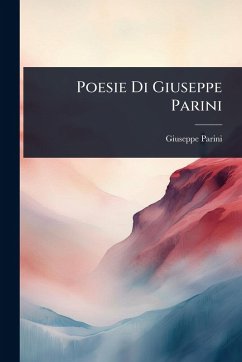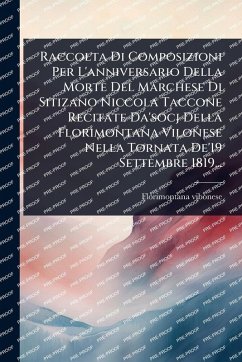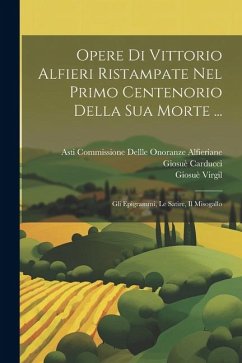
In morte di Giuseppe Verdi, Canzone; preceduta da una orazione ai Giovani

PAYBACK Punkte
6 °P sammeln!
In morte di Giuseppe Verdi, Canzone; preceduta da una orazione ai Giovani is a poignant tribute to the celebrated Italian composer Giuseppe Verdi, penned by the renowned poet Gabriele D'Annunzio. This work, published in 1912, comprises a moving canzone-a traditional Italian poetic form-and an accompanying oration addressed to the youth. D'Annunzio's eloquent verses capture the profound sense of loss felt upon Verdi's passing, while simultaneously celebrating his enduring legacy and the indelible mark he left on Italian culture and music. The oration serves as an inspiring call to action for th...
In morte di Giuseppe Verdi, Canzone; preceduta da una orazione ai Giovani is a poignant tribute to the celebrated Italian composer Giuseppe Verdi, penned by the renowned poet Gabriele D'Annunzio. This work, published in 1912, comprises a moving canzone-a traditional Italian poetic form-and an accompanying oration addressed to the youth. D'Annunzio's eloquent verses capture the profound sense of loss felt upon Verdi's passing, while simultaneously celebrating his enduring legacy and the indelible mark he left on Italian culture and music. The oration serves as an inspiring call to action for the younger generation, urging them to embrace the values and artistic vision that defined Verdi's illustrious career. This volume stands as a testament to the powerful intersection of poetry and music, offering readers a glimpse into the deep reverence held for Verdi by one of Italy's most influential literary figures. It remains a valuable historical document, reflecting the cultural and artistic sentiments of early 20th-century Italy. This work has been selected by scholars as being culturally important, and is part of the knowledge base of civilization as we know it. This work was reproduced from the original artifact, and remains as true to the original work as possible. Therefore, you will see the original copyright references, library stamps (as most of these works have been housed in our most important libraries around the world), and other notations in the work. This work is in the public domain in the United States of America, and possibly other nations. Within the United States, you may freely copy and distribute this work, as no entity (individual or corporate) has a copyright on the body of the work. As a reproduction of a historical artifact, this work may contain missing or blurred pages, poor pictures, errant marks, etc. Scholars believe, and we concur, that this work is important enough to be preserved, reproduced, and made generally available to the public. We appreciate your support of the preservation process, and thank you for being an important part of keeping this knowledge alive and relevant.









![Cancioneirinho De Trovas Antigas [Ed. by F.a. De Varnhagen]. Cover Cancioneirinho De Trovas Antigas [Ed. by F.a. De Varnhagen].](https://bilder.buecher.de/produkte/74/74771/74771348n.jpg)


